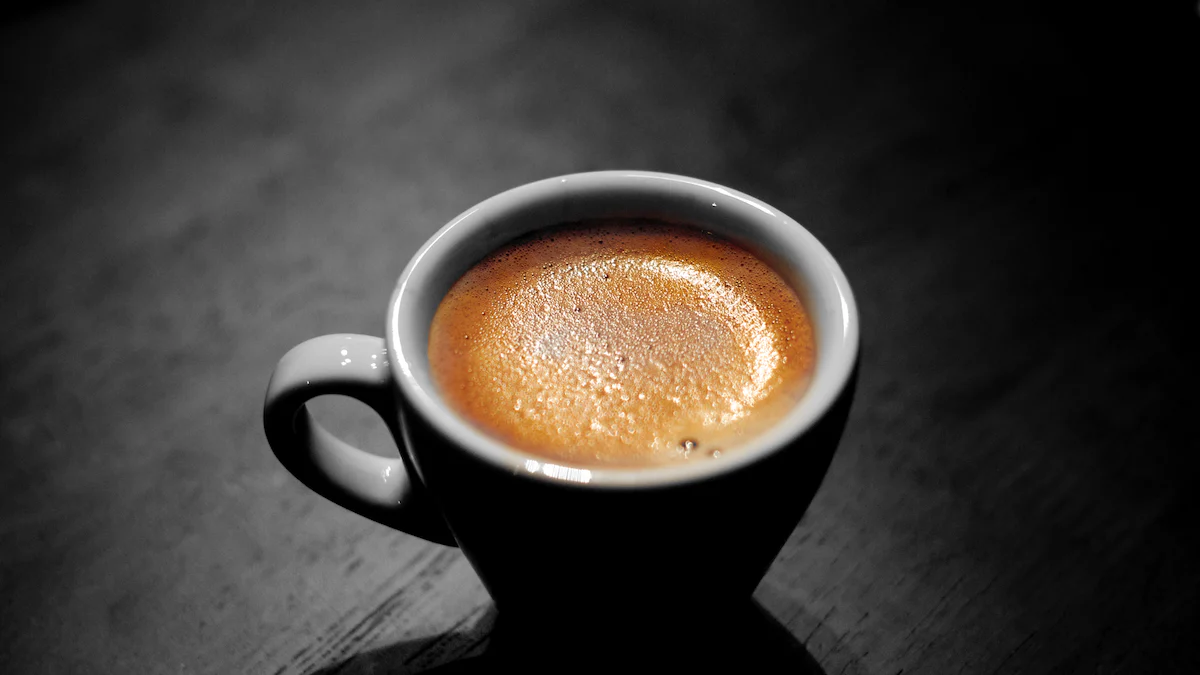FTC/ASA Disclosure: Some links in this post are affiliate links. At no additional cost to you, I will earn commission if you purchase via my links. Thank you in advance for your support! 🙏 It means a lot to me. ❤️
Introduction
Espresso and drip coffee are two popular brewing methods that offer distinct differences in taste, brewing process, equipment, and customization options. These two methods have their own unique characteristics that cater to different preferences and palates.
Espresso is brewed using high pressure and finely ground coffee, resulting in a concentrated and intense flavor. The high-pressure extraction process extracts the flavors quickly, creating a rich and bold taste. On the other hand, drip coffee is made by slowly dripping water over coarsely ground coffee. This method produces a milder and smoother taste as the water slowly filters through the grounds.
Whether you prefer the strong and robust flavor of espresso or the balanced and nuanced taste of drip coffee, understanding these differences will help you choose the brewing method that suits your personal preferences. Let's dive deeper into each aspect to explore the variations between espresso and drip coffee.
Brewing Process
The brewing process is where the differences between espresso and drip coffee become apparent. Each method has its own unique approach to extracting flavors from the coffee grounds.
Espresso
Espresso is brewed using high pressure, typically around 9 bars, which forces hot water through finely ground coffee. The high pressure allows for a rapid extraction of flavors, resulting in a concentrated and intense flavor profile. The finely ground coffee used in espresso helps to maximize the surface area exposed to water, allowing for efficient extraction.
To brew espresso, the finely ground coffee is tightly packed into a portafilter and inserted into an espresso machine. When the machine is activated, hot water is forced through the compacted coffee at high pressure, extracting the flavors in a matter of seconds. The result is a small shot of strong and flavorful espresso.
Drip Coffee
Drip coffee, on the other hand, is made by slowly dripping water over coarsely ground coffee. This method relies on gravity to extract flavors from the grounds as water passes through them. The coarser grind size used in drip coffee allows for a slower extraction process compared to espresso.
To brew drip coffee, water is poured into a reservoir in a coffee maker or drip brewer. It then flows through a filter containing coarsely ground coffee and drips down into a carafe below. The slower extraction process of drip brewing produces a milder and smoother taste compared to espresso.
The brewing process plays a significant role in determining the flavor profiles of both espresso and drip coffee. Understanding these differences will help you appreciate each method's unique characteristics when it comes to taste and intensity.
Flavor Profiles
The flavor profiles of espresso and drip coffee differ significantly, offering distinct taste experiences for coffee enthusiasts.
Espresso
Espresso is known for its concentrated and intense flavor. The high-pressure brewing process extracts the flavors quickly and efficiently, resulting in a rich and bold taste. The concentrated nature of espresso gives it a strong and robust character that can be enjoyed on its own or used as a base for various coffee-based beverages.
The flavor profile of espresso often includes notes of dark chocolate, caramel, and roasted nuts. It has a full-bodied texture with a lingering aftertaste. The intensity of the flavors can vary depending on factors such as the type of beans used, the roast level, and the brewing technique employed.
Drip Coffee
Drip coffee offers a milder and smoother taste compared to espresso. The slower extraction process allows for more subtle flavors and nuances to come through in the cup. Drip coffee is often described as balanced and nuanced, showcasing the unique characteristics of the beans used.
The flavor profile of drip coffee can vary widely depending on factors such as the origin of the beans, their roast level, and even the water temperature used during brewing. Common flavor notes found in drip coffee include fruity undertones, floral hints, and sometimes even nutty or chocolatey accents. The result is a smooth and well-rounded cup of coffee that is enjoyable to sip throughout the day.
Understanding these flavor profiles will help you choose between espresso and drip coffee based on your personal preferences. Whether you prefer the intense strength of espresso or the subtle complexities of drip coffee, both options offer a wide range of flavors to explore.
Variety and Customization
Both espresso and drip coffee offer a wide range of options when it comes to variety and customization, allowing you to tailor your coffee experience to your preferences.
Espresso
Espresso provides a vast selection of beans and roasts to choose from. Different types of beans, such as Arabica or Robusta, can be used to create unique flavor profiles. Roast levels, ranging from light to dark, also contribute to the taste and aroma of the espresso.
Furthermore, espresso allows for experimentation with brewing techniques. Baristas can adjust variables such as water temperature, extraction time, and pressure to achieve different results. This level of control enables them to highlight specific flavors or characteristics in the coffee.
Espresso is highly customizable beyond the brewing process as well. Milk-based drinks like cappuccinos or lattes can be created by adding steamed milk or frothed milk to espresso shots. Syrups and spices can also be incorporated to enhance the flavor profile according to personal preferences.
Drip Coffee
Drip coffee also offers a wide variety of beans and roasts that cater to individual tastes. From single-origin beans to blends sourced from different regions, there are endless possibilities for creating diverse flavor profiles in drip coffee.
Similar to espresso, drip coffee allows for experimentation with brewing techniques. Factors such as water-to-coffee ratio, brew time, and even the type of filter used can influence the final taste. Home baristas can explore different methods like pour-over or French press brewing to discover their preferred flavor profiles.
Customization options for drip coffee often involve additions like cream or milk for added richness and sweetness. Sugar or sweeteners can be used to adjust the sweetness level according to personal preference. Flavorings such as vanilla or caramel syrup can also be added for an extra layer of complexity.
Whether you prefer the versatility of espresso or enjoy exploring different flavors through drip coffee customization, both methods provide ample opportunities to create a personalized coffee experience.
Brewing Equipment
The brewing equipment used for espresso and drip coffee differs in terms of complexity and functionality, each designed to cater to the specific needs of the brewing method.
Espresso
To brew espresso, an espresso machine is required. These machines come in various types, including manual, semi-automatic, and fully automatic. Manual machines require the barista to control every aspect of the brewing process, from grinding the coffee to pulling the shot. Semi-automatic machines offer more convenience by automating certain functions while still allowing manual control over extraction time and volume. Fully automatic machines handle everything from grinding to extraction with minimal user input.
Espresso machines use a portafilter, a handle-like device that holds the coffee grounds. The portafilter is locked into the machine, and when activated, hot water is forced through it at high pressure. This pressure extracts the flavors from the coffee grounds quickly and efficiently.
Drip Coffee
Drip coffee requires a coffee maker or drip brewer for preparation. These machines are available in both manual and automatic versions. Manual drip brewers involve pouring hot water over coffee grounds manually, allowing gravity to pull the water through a filter into a carafe below. Automatic drip coffee makers automate this process by heating water internally and dripping it over the grounds.
Drip brewers utilize a filter system to hold the coffee grounds while allowing water to pass through. Gravity pulls water through the filter slowly, resulting in a longer extraction time compared to espresso. This gentle extraction process produces a smoother and cleaner cup of coffee.
The choice between espresso machines and drip brewers depends on personal preference and desired level of involvement in the brewing process. Both options offer varying levels of automation while ensuring you can enjoy your preferred style of coffee at home or in a café setting.
Role of Grind Size
The grind size of coffee beans plays a crucial role in both espresso and drip coffee brewing methods. The size of the coffee particles affects the extraction process, flavor profile, and overall quality of the brew.
Espresso
Espresso requires a fine grind size, much finer than what is typically used for drip coffee. The fine grind allows for maximum extraction of flavors during the short brewing time. When hot water is forced through the tightly packed grounds in an espresso machine, it comes into contact with a larger surface area, extracting the rich oils and flavors quickly.
The fine grind size also helps create a strong and concentrated shot of espresso. It facilitates the high-pressure extraction process by allowing water to flow evenly through the compacted coffee bed. This results in a bold and intense flavor profile that espresso enthusiasts appreciate.
Drip Coffee
Drip coffee calls for a coarser grind size compared to espresso. The larger particle size allows for slower extraction and filtration as water passes through the grounds. This slower process ensures that the water has enough time to extract flavors without over-extracting or causing bitterness.
The coarser grind size used in drip brewing produces a smoother and cleaner cup of coffee. It allows for better control over extraction time, resulting in a well-balanced brew with fewer sediments or fines in the final cup.
Choosing the appropriate grind size is essential to achieve optimal results when brewing either espresso or drip coffee. Using the correct grind size ensures proper extraction, enhances flavor profiles, and contributes to an enjoyable coffee experience.
Conclusion
In conclusion, espresso and drip coffee offer distinct differences in taste, brewing process, equipment, and customization options. Espresso is renowned for its concentrated and intense flavor profile, while drip coffee provides a milder and smoother taste experience. Both brewing methods provide a wide variety of flavors to explore and allow for customization according to personal preferences. Whether you prefer the bold strength of espresso or the nuanced complexities of drip coffee, both options cater to the diverse tastes of coffee enthusiasts and home baristas. So go ahead, choose your preferred brewing method, and savor the delightful world of coffee.
Brewhilda.com is a participant in the Amazon Services LLC Associates Program, an affiliate advertising program designed to provide a means for sites to earn advertising fees by advertising and linking to Amazon.com.










